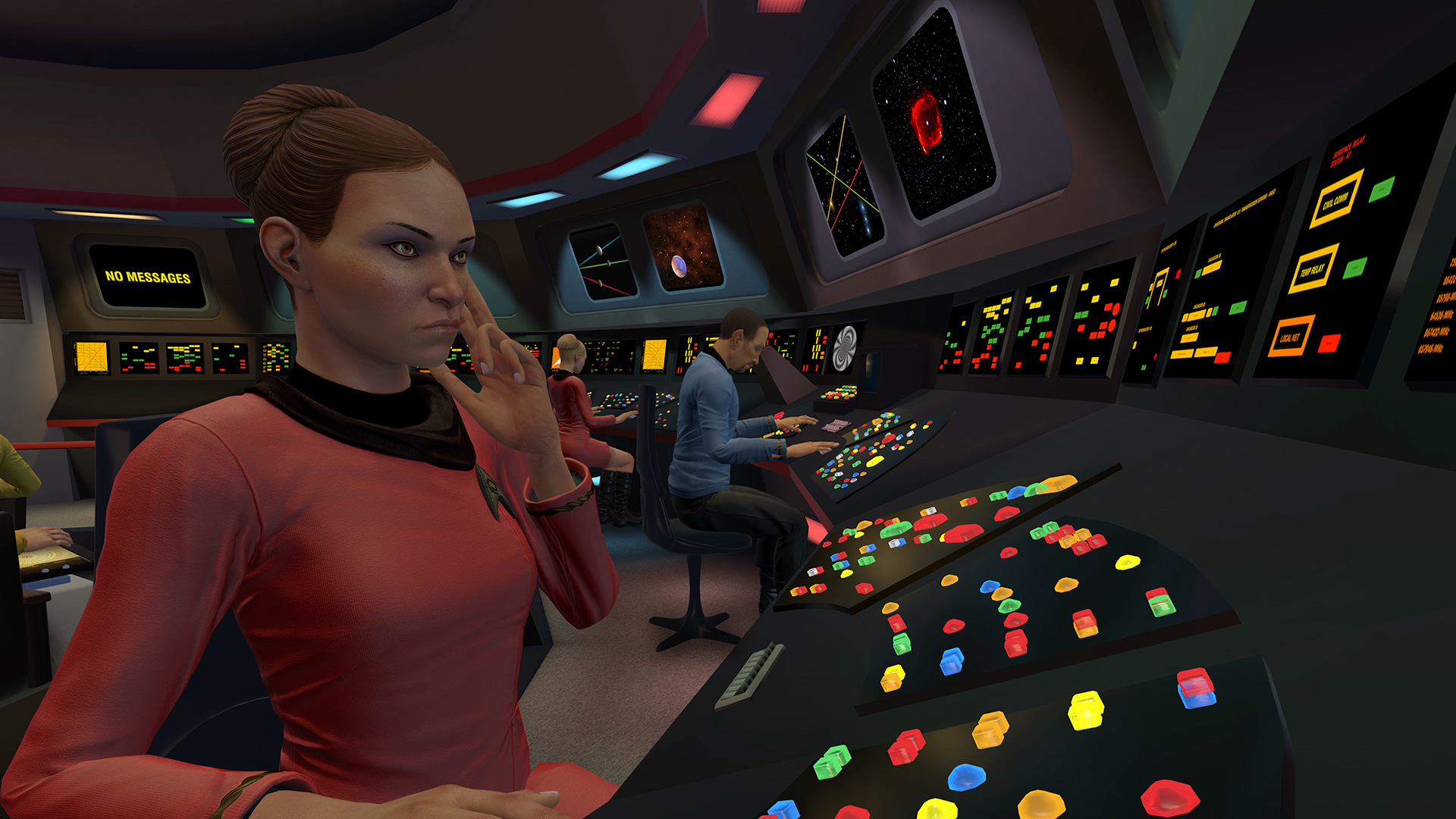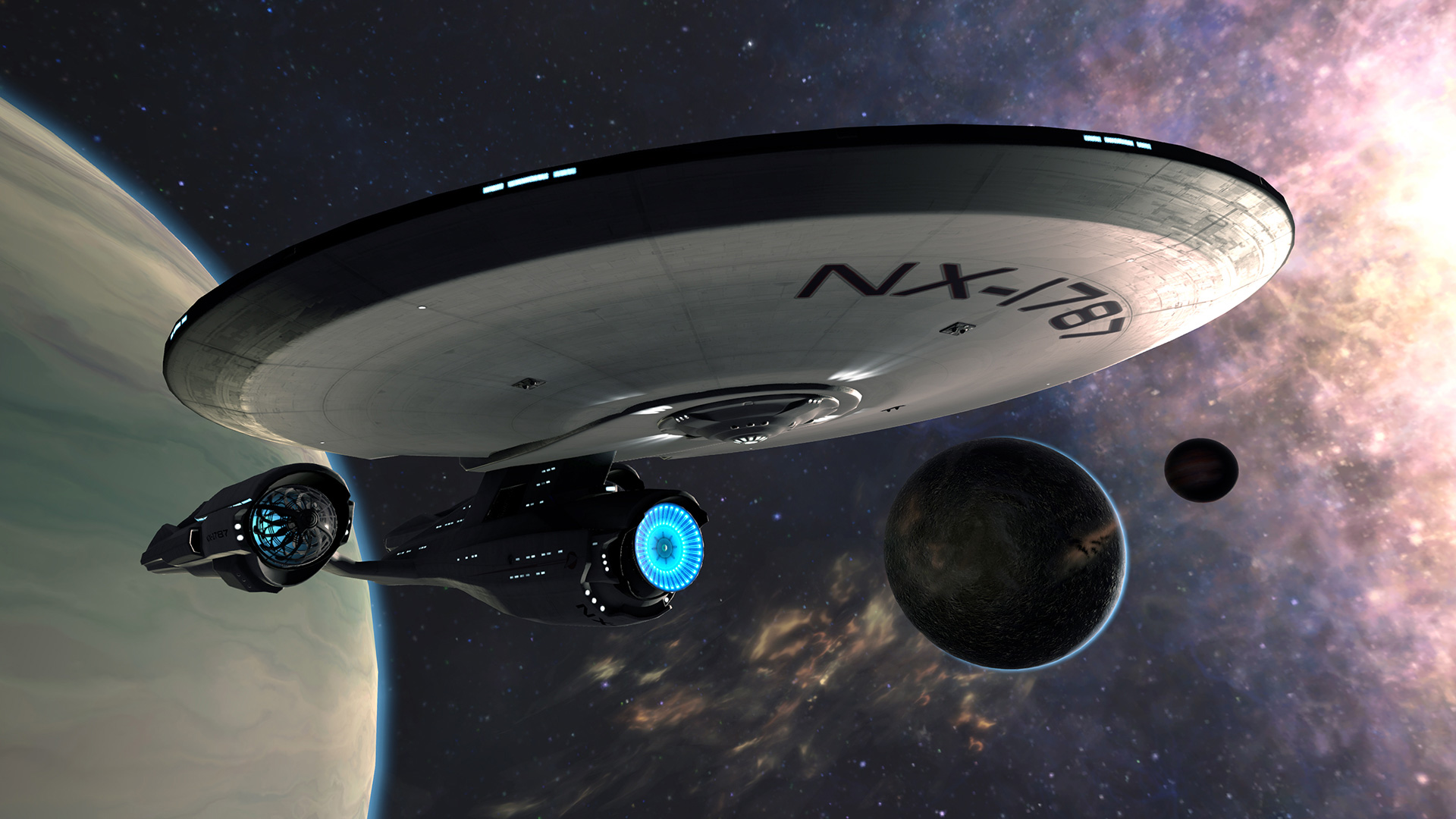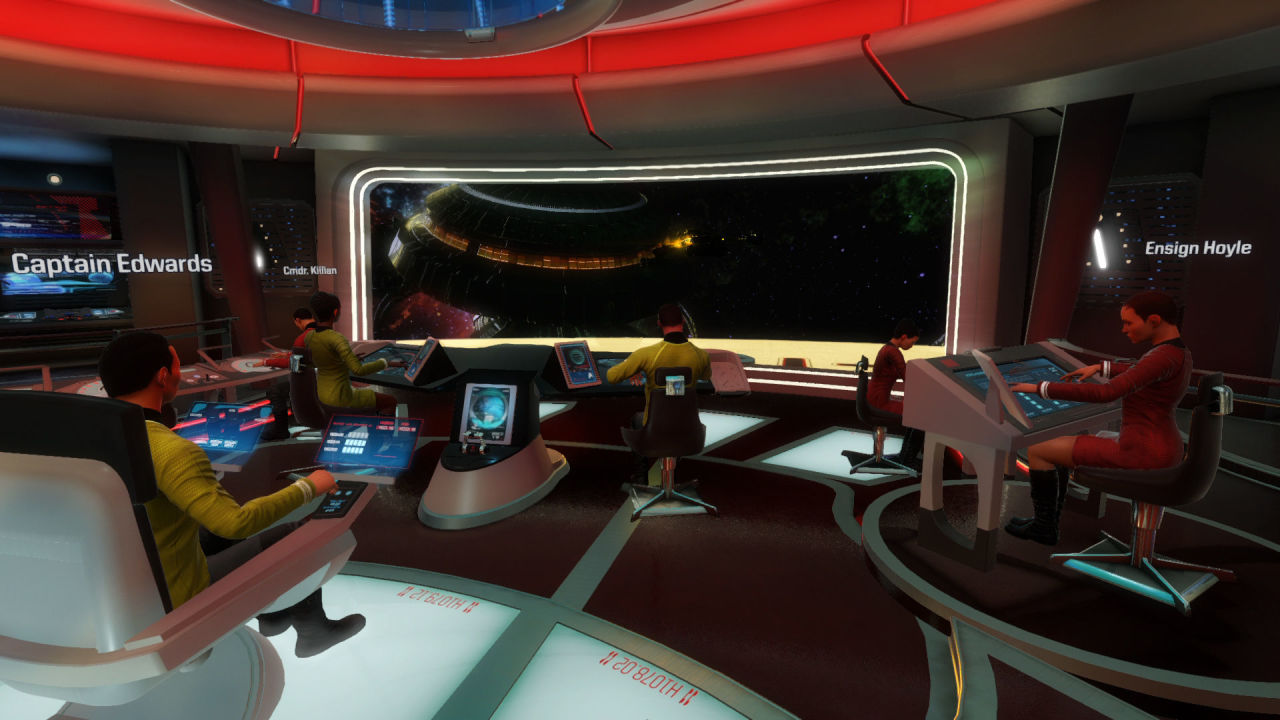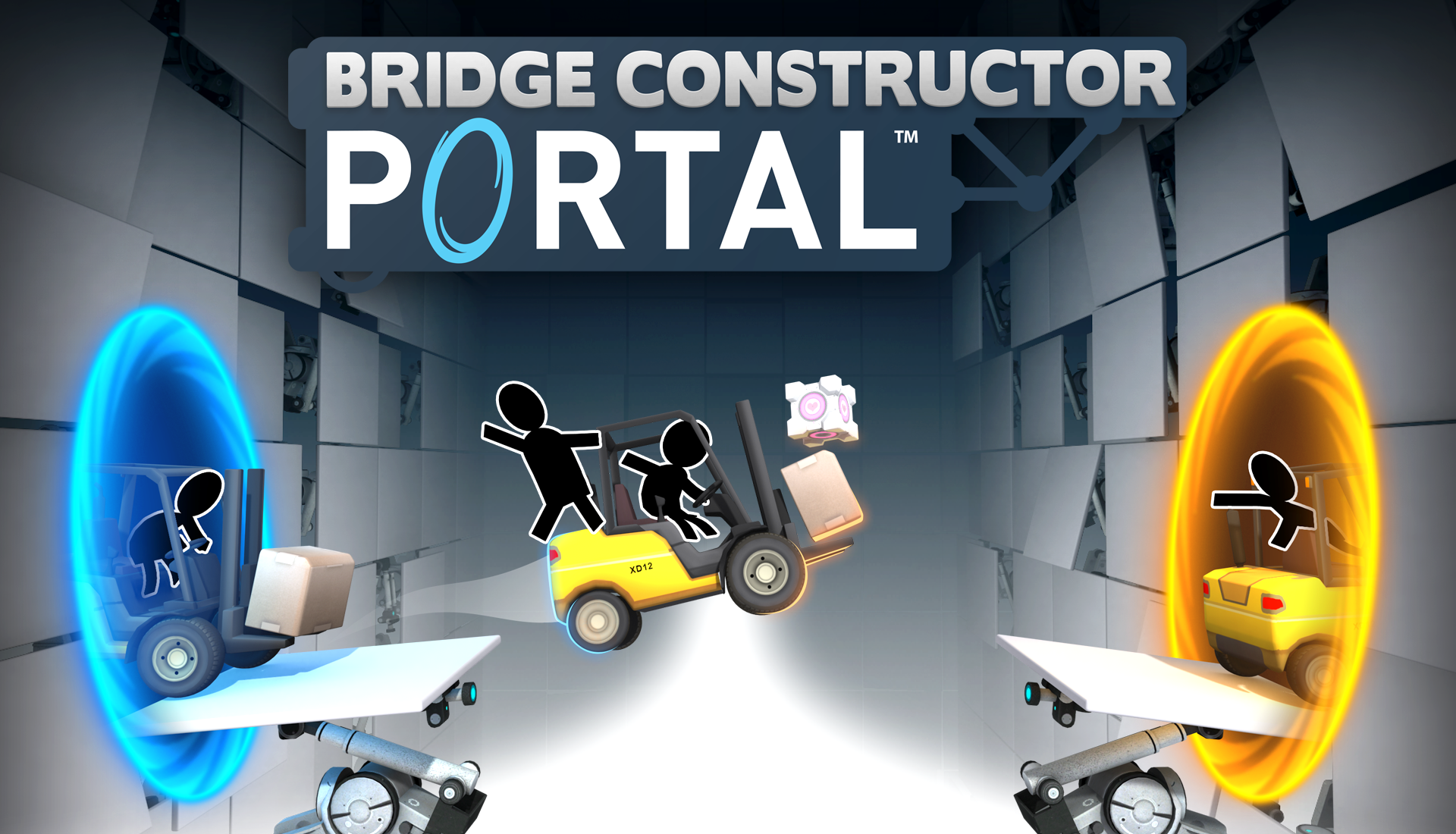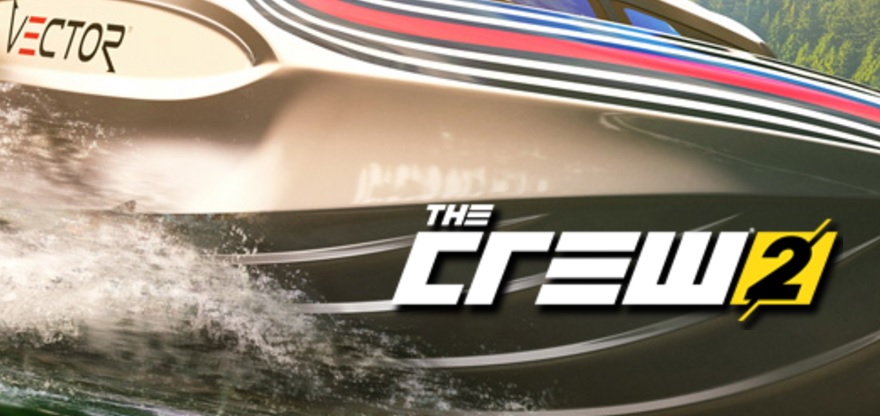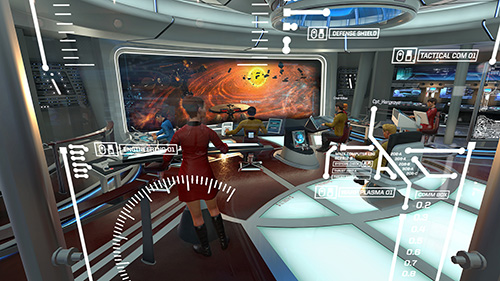
I’m confident in saying Star Trek: Bridge Crew is an ‘instant sell’ concept for all Trekkies. ‘You can actually be on the show’ is all we need to hear to hand over our money, but that’s only part of what Ubisoft’s Bridge Crew promises. Rather than a single-player campaign, or an on-rails experience like Star Wars Battlefront, Star Trek: Bridge Crew is heavily focused on providing a co-op online multiplayer VR experience – a blueprint, or set of tools, for Trekkies and VR fans alike to create their own missions and set about on their own adventures.
It’s an interesting and admirable idea. The technology behind Bridge Crew feels very reminiscent of Ubisoft’s earlier PS VR title, Werewolves Within, where players sat around a virtual campfire for a simple board game, able to see and talk to each other’s virtual avatars with even a degree of lip-syncing. In Bridge Crew, a party of four must work together on the bridge of a starship in specialised roles, and it helps being able to actually see the other players and communicate both verbally and non-verbally. As a Trekkie, it’s a joy. It’s hugely immersive not only to be able to give an order to a crew member, but also see if they’ve cocked their head to pay attention to you, or if they’re in trouble, if they’re currently focused on the wrong controls. It’s more than the ‘virtual chat room’ criticisms that could be lobbed at Werewolves Within, and goes a long way into turning that tech into gameplay that works and makes sense.
Star Trek: Bridge Crew primarily takes place on the USS Aegis, a starship from the rebooted Kelvin-timeline Star Trek movies (with Chris Pine, Shaun of the Dead and the rest). The Aegis has been assigned to explore The Trench, a region of space filled with all kinds of trouble, from mysterious debris, anomalies, pirates and Klingon raiders, and the game’s short five-mission campaign puts the Aegis’ crew through its paces, as they engage in exploration, rescue operations and deadly battles.
If you’re coming to Bridge Crew looking for a compelling Star Trek narrative, I suggest you look elsewhere. The campaign doesn’t pull you in with any interesting characters or events, instead serving as an ease-in to the ‘Ongoing Missions’ mode where players can spend most of their time. I suspect setting Bridge Crew in the Kelvin-timeline is a result of the well-known licensing issues between CBS and Paramount, as one would think that creating a Star Trek game which is entirely set on the bridge would be the perfect opportunity to replicate fan-favourite sets from The Next Generation, Voyager and more. The original Enterprise’s bridge from The Original Series does show up as an optional skin for online missions, but its controls are so fiddly and hard to adjust to, it’s only a viable option for the most experienced crews.
The campaign can be tackled in single-player, as you can assign general orders to AI crew members who efficiently carry them out, or you can hop into their positions to take care of things yourself. It’s not a bad way to train up in a role you’re unfamiliar with, but Star Trek: Bridge Crew is an online-focused experience, and that’s where all the fun is.
Players can take on one of four roles: Helm, in charge of steering the ship and warp drive; Tactical, in charge of scanning and weapons; Engineer, in charge of power distribution and repairs; and Captain, in charge of co-ordinating all the other roles and receiving objectives for the crew. Each role has its appeal – Helm and Tactical are the most hands-on, as you physically get to drive the ship or shoot Klingons out of the sky. Gameplay here is much like the Starfleet Academy games of yore, although the Aegis seems incapable of moving very much in 3D space and is restricted to a narrow field. Using PlayStation Move controllers for the Helm can be a little fiddly as well, as they replicate your hands sliding along a virtual touchscreen – as silly as it seems, it feels like the starship should be on joystick controls (much like Commander Riker once showcased). On the surface, Engineering is the most boring role, simply moving energy distribution around on a touch-screen and dropping repair crews onto systems – however, it’s also the most vital to success, relying on anticipating the mission’s needs based on the captain’s orders.
Captain, funnily enough, is the role not many are willing to volunteer for in most of the games I’ve played, as it relies almost entirely on communication. The Captain is the only player who can see objectives from Starfleet, or mission-critical information such as a countdown timer, so the success of the mission rests in their ability to have the crew carry out their order and adapt to the situation. While I have tried every role in the game, I frequently roll Captain just because nobody else wants to put their hand up for it, and it can be quite a tough gig – knowing when to lead, when to take advice, and when to enforce your orders.
The point of all this is that strategy and communication are at the heart of Bridge Crew in a unique way I haven’t seen in any other VR game. Most missions revolve around either combat or stealth, sometimes requiring the ship to survive waves of enemies and sometimes necessitating a power-cut to all systems to move at snail’s pace and creep around a system to avoid detection. There aren’t any options for the diplomacy or problem-solving that most Star Trek episodes deal with, making all of your decisions tactical ones instead.
Beyond the short campaign are ‘Ongoing Missions’, where players can randomly generate missions based on The Trench’s map, using the base themes of exploration, rescue, recovery and defence. These, of course, aren’t as heavily plotted as the campaign missions, but still add a fair bit of replayability, especially if you’ve got a good group going and are looking for new challenges to tackle together. It works, but it can get repetitive, especially since you’ll generally be stuck on the one bridge (the Aegis, given the Enteprise is so hard to use), and visiting the same star systems over and over.
I’m sorry to say that I’m an aficionado of Star Trek games, and in the grand scheme of things Bridge Crew doesn’t quite match up to the legacy that Bridge Commander built as an all-encompassing bridge-simulator. It doesn’t have the thrilling excitement of Elite Force, or the solid narrative of Judgment Rights or A Final Unity either, nor does it feel as authentic as those games, given it’s set in the shiny-yet-sterile Kelvin-reboot-timeline.
However, what Bridge Crew does succeed in creating is the sense of teamwork and camaraderie that all Star Trek shares. It feels like the next evolution of a Dungeons & Dragons campaign, or a virtual reality LARP. It sells the concept of online VR gaming in a big way, and while it feels a little bare-bones, Star Trek: Bridge Crew carries on the Star Trek tradition by showing us a future where co-operation, respect and friendship are humanity’s most powerful assets as we explore the cosmos.
- Fantastic showcase for the immersion of VR - Hinges on, and is strengthened by, co-operative role playing - Full of tense and memorable moments
- Short campaign - Only two bridges - Controls can be finicky - Limited gameplay types don't cover Star Trek's scope

